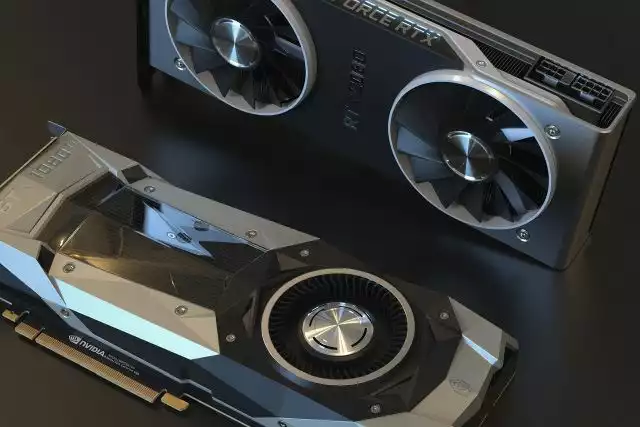
” We’re building some fairly concentrated AI velocity within a GPU wrapper,” Mamtora said. “We can choose to develop that even more, or take little bits of the GPU out, it depends just how points progress. We have actually obtained all the bits and items. Yet as it stands today, so much of what you need to resolve is GPU-like that [ an AI accelerator] would seem like the incorrect instructions.”.
Imagination’s brand-new AI approach is concentrated on bringing side AI to the side GPU. Imagination thinks it has actually already solved essential AI challenges, like power efficiency and reliable data motion, in its GPU IP lines. Modern technology developed for the accelerator, including its chart compiler, can be reused in its GPU stack.
,” Mamtora stated. “Either take something NPU-like and make it extra basic, giving up some PPA, or begin with a GPU, which is inherently adaptable and after that add to its PPA by adding thick, low-precision compute capacity.”.
Creative imagination has actually likewise “rebooted” its AI innovation method in the last 18 months. The business had three generations of standalone neural network accelerator IP under its belt, however has actually discontinued development on this line.
“The crucial problem we’re trying to fix is to develop something to take on [Nvidia’s] CUDA,” Mamtora said. “Developers want [their applications] running on a system, they simply wish to equate it and for it to function– forget performance to start with, it just has to work. The basic trouble we had with our AI accelerator was getting points running in the first place.”.
Migrating and maximizing for end customers’ algorithms and sustaining them over the item’s life time came to be really difficult. Creativity’s customers intended to tailor software program for their very own clients, and they wished to press support for that back onto Imagination.
Sally Ward-Foxton covers AI for EETimes.com and EETimes Europe magazine. Sally has actually invested the last 18 years discussing the electronic devices industry from London. She has created for Electronic Design, ECN, Electronic Specifier: Design, Components in Electronics, and many more news publications. She holds a Masters’ degree in Electrical and Electronic Design from the University of Cambridge. Adhere To Sally on LinkedIn.
Mamtora claimed. “After that we ‘d be in a race with different competitors for two or three weeks with our team taking something as premature as a study paper or home-grown network, attempting to obtain it functioning on equipment.”.
“It ended up being a huge software program job, which morphed from hardware we might develop internal to having to have a huge team of software program engineers to support an ever-evolving and changing software application stack, with customers requiring so many degrees of assistance,” Mamtora claimed. “We really did not see that as sustainable.”.
In general, Beresford-Wylie is pleased with how the company has actually raised its account in current years (because what he calls the “trauma” of 2016-2020), and is now secure and bring in customers, he claimed. “Our item group has actually also done an excellent task developing our sector emphasis and what that implies in terms of item flow and item households.”.
“After that we require to think about efficiency profiling and how to make it work actually well, which’s where we can concentrate our investment,” Mamtora stated. “Rather than concentrating on all the layers of the stack to get down to something that’s working on our hardware, we focus on the smarts that get you to 70% plus application of our ALU cores and make maximum use our memory data transfer. That permits us to focus on where we really do distinguish– between chart level and GPU.”.
GPUs match almost the smallest side systems– those with an application processor and above– and Creativity customers in this space generally already have an on-chip GPU for graphics workloads, enabling versatility and asset reuse. AI and graphics are additionally not conveniently separable, with boosting use of AI strategies in graphics workloads.
KINGS LANGLEY, U.K.– British IP service provider Creativity Technologies has actually elevated financial investment in the form of a $100 million convertible term lending from Fortress Investment Team. Imagination will use the funds to sustain the advancement of its innovations for graphics, compute and AI at the edge, along with fund its enthusiastic growth goals.
“We are still laser-focused on three sectors: automobile, data center and desktop, with mobile/consumer crucial sufficient now for us to think of that as a 4th sector,” Beresford-Wylie stated., yet what’s altered given that then is the significance of AI.”.
“The China market has been a little bit a lot more challenging than we ‘d have thought, because of the export control program below in the U.K. and also the entity listing in China that has had an influence on us and our revenues,” Creativity chief executive officer Simon Beresford-Wylie told EE Times in an exclusive interview. “The effect was some downsizing we did in 2015 to get costs compatible revenue.”
The trick, he stated, is getting the best balance in between adaptable and fixed-function calculate in a service software application programmers can accessibility. GPUs are currently effective parallel processors, and offer reliable orchestration of workloads and reliable use memory, he said, highlighting effective memory usage as particularly important– because memory does not scale like reasoning does at the most sophisticated procedure nodes.
This was challenging to develop as an IP provider, Mamtora said, especially considering the price of development in AI designs and frameworks and the fragmented state of AI software framework. It was largely the obstacles of developing an AI software application stack that led to the choice to stop creating Imagination’s AI accelerator.
Creative imagination was established virtually 40 years earlier in the U.K. and today, Creativity IP can be located in 13 billion devices around the world. China represented a third of Creativity’s organization in 2019, then-CEO Ron Black informed EE Times at the time. A mix of these variables implied Creative imagination lost some of its crucial Chinese customers in the data center and desktop segments. Creative imagination’s new AI approach is focused on bringing edge AI to the side GPU. Imagination believes it has already fixed vital AI difficulties, like power effectiveness and reliable data motion, in its GPU IP lines.
Creativity was established virtually 40 years earlier in the U.K. and today, Imagination IP can be found in 13 billion devices around the world. Creativity additionally sold its current procurement, MIPS, at the time.
“Like practically every various other company, we saw convolutional neural network accelerators and assumed, ‘Yeah, we ought to do among those,'” Mamtora informed EE Times. “And then you start creating hardware which is great at MatMul operations, and afterwards you find, oh, what’s the software application stack to opt for it? Just how do we subject that to our customers and designers?”.
China represented a third of Creativity’s company in 2019, then-CEO Ron Black told EE Times at the time. A combination of these factors suggested Creative imagination shed some of its key Chinese clients in the data facility and desktop computer sectors.
“The method we’ve created our GPU provides you the appropriate foundational building blocks,” Mamtora said. “If you begin with an NPU, you begin with something PPA-efficient, after that grow to deal with versatility. Whereas with a GPU, you’ve addressed the scheduling problem, you’ve thought about the memory problem in a mobile-heritage GPU, and you’ve already got some efficient adaptable calculate. The fixed function calculate is really the easy thing to [add] It’s all the various other stuff around managing the motion of data, and handling power effectively that’s hard, and GPUs do that quite well already.”.
The problem of needing to support customers’ internal algorithms is much less severe considering that the most innovative consumers can set GPUs down to the steel, if required. Allowing this level of access to the AI accelerator was challenging because when it was being created, the space was still emerging. The growth of MLIR (the compiler intermediate depiction layout for AI), and some consolidation around Pytorch as a structure, now allow the AI software stack to be broken into cleaner abstractions.
1 Fortress Investment Group2 Imagination
3 KINGS LANGLEY
4 provider Imagination Technologies
« Trend Micro Maximum Security review: Better alternatives existAMD talks Ryzen 9000 controversy: ‘We were as puzzled’ as reviewers »
